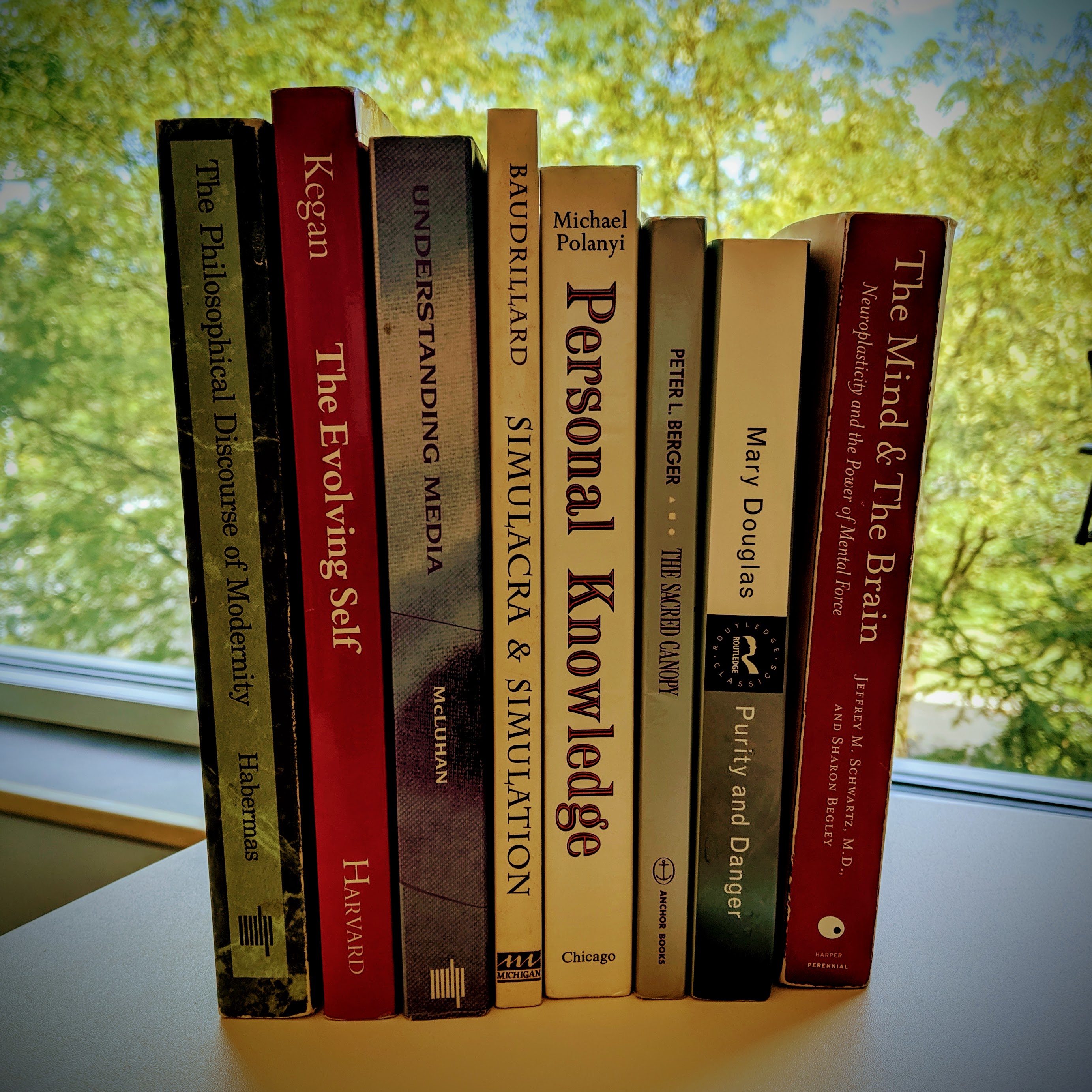We do not accept Jews, because they reject Christ, and through machinations of their International Banking Cartel, are at the root center of what we call “communism” today.
We do not accept Papists, because they bow to a Roman dictator, in direct violation of the First Commandment and the true American Spirit of Responsible, Individual, Liberty.
We do not accept Turks, Mongols, Tarters, Orientals, Negroes, nor any other person whose native background of culture is foreign to the Anglo-Saxon system of government by responsible FREE, Individual citizens.
If you are a Christian, American Anglo-Saxon who can understand the simple truth of this Philosophy, you belong in the White Knights of the Ku Klux Klan of Mississippi. Get your Bible out and pray!
1964 Recruiting leaflet for the Ku Klux Klan
I can remember learning about the plight of black Americans as told by the approved histories written by well-meaning white people. Back in junior high we learned how bad slavery was, that black Americans were forced to use separate (but equal) public facilities, and could not vote after the terms of their theft and purchase were lifted. I remember Rosa Parks on the bus and how horribly she was treated for simply sitting down after a hard day of work. Then came Martin Luther King, Jr. and “I Have a Dream” which was quickly followed by laws written by white people to right the wrongs of their parents who had created and enforced Jim Crow laws and whose grandparents may have even owned a slave or two. The message was pretty clear: white people treated black people badly, but they fixed it! Good white people joined forces with good black people and solved racism. Malcolm X was militant, the Black Panthers were terrorists, and MLK was a “good” black guy who loved Jesus and nonviolence. We’d remember this sanitized history every winter for Black History Month, feel content about fixing the problem, and move forward with our lives as the good guys. In the midst of this self-congratulatory posture we never detected the virus of white supremacy that was still very much alive in our systems.
We would have conversations wondering why there was no White History Month and would question the fairness of policies like “affirmative action.” We had just learned that racism was one race unfairly favoring itself over another race and that our white parents had fixed the racist policies of their parents, so why are black people allowed to unfairly favor their race? To thousands of “well-meaning” and “nice” suburban white kids in the 80s, from what we had just learned from our nice white teachers reading from texts written by nice white scholars, it seemed that angry black people were re-litigating a problem other nice white people fixed and were now being racist themselves. We saw emerge a new fascination with Malcolm X, a romanticization of Africa, and a new holiday called Kwanzaa. None of this made sense with what we had just been taught. Racism was fixed and we were all supposed to be homogeneous and nice Americans. It seemed that racism was being brought back not by white people, but ironically by black people. As Morgan Freeman would later say in a comment that got plenty of traction in white supremacist circles, “Stop talking about it.” Why do we have to relive something that no longer exists? The nice white people heard MLK’s dream and made it happen!
In junior high school, I learned the mechanisms of white supremacy as an aspiring friend of white power skinhead ideology. I was a scared, lonely kid from a dysfunctional home and desperately in need of purpose and meaning. Friends were hard to come by as introverted and different I felt. I found a small group of fellow misfits who listened to heavy music and rooted their identity in the idea that white America fixed racism, built a great society, and the genetically inferior black people, immigrants, and Jews were here to take that from us. My soundtrack became the words of Skrewdriver singing “White power for Britain, before it gets too late” and S.O.D. singing “Speak English or Die.” The natural consequences for failing to assimilate into our nice, white nation were permanent separation. “Find a new place to live” was the mantra. If you can’t assimilate, feel free to carve out a little place of your own to be savages who can’t accept this white, “Judeo-Christian” nation. The USA was meant to be a white, ethno state and others were welcome here as long as they submitted to white authority. The black cities were violent hellscapes for the same reason. They needed to fix their problems and it was time to stop asking white people to bail them out. Maybe Plessy v. Ferguson was right all along. Those black people and savage immigrants who fail to assimilate and submit to civilized, nice white people should find a place to live apart from us.
As a kid in search of identity and meaning I had truly found a place I could live. I learned the intimate and violent mechanisms of white supremacy not in a classroom, but from peers who had caught the disease and were sharing it like junkies with a needle. People and races were categorized by genetics and intelligence. Evolution seemed to show that the darker the skin, the more savage the creature. There were a few, rare exceptions of black people who sounded “white” and there was a rational separation between a black person and a “n***er” rooted in how “white” that person seemed to speak and behave. Like any animal, they could be tamed. Those that were tamed, civilized, and fully assimilated to the white way of life should be grateful that they were a genetic anomaly which escaped the clutches of savagery. Inside this white supremacist bubble, black people only contributed to society what white people had given them and Hitler had the right idea about cleansing the bloodlines even if he was a little crazy in his audacity to commit genocide. I would later come to understand that this was a complex system of purity that separated matter into distinct categories and there was a rationale for disposing of that material which was dirty and infected. Whiteness was the only cure and assimilation through submission was the delivery mechanism.
In the late 1980s when black people through their music and art told a counter-narrative that the “Dream” had been deferred and white America had become complacent if not violently oppressive, it sounded like militants who were causing the problem. Insistent in reclaiming their African ethnicity, it felt like they didn’t appreciate what good white people had done for them and they now wanted to unfairly tip the beautifully balanced scales in their favor. What they called injustice was the real inequality. Maybe it was time for all the white people who at this point had all fixed slavery and racism to reassert their niceness by reminding black people racism was over. They shouldn’t mess it up by asserting un-American, un-Christian ideas. After all, “we” begrudgingly gave them an entire month to celebrate nonviolence and their marches.
It’s easy to see how the narrative of civil rights as it was taught became a carrier of white supremacy. We of the white suburbs never learned its mechanisms and philosophies further than a few simple ideas: Plessy v. Ferguson wasn’t all that great, slavery was really bad, something about the KKK and lynch mobs, and to be grateful all of this stuff had been eradicated from our now unified and content nation. White Generation X grew up with these beliefs and had a childhood shaped by them. White kids became “nice” adults who didn’t recognize white supremacy because they weren’t aware of what it was so they got infected by it in subtle ways. Our schools didn’t vaccinate them out of fear that teaching the subtle mechanisms of white supremacy would somehow transmit the virus. Like any vaccine, you need a little bit of the virus so the body can learn to defend itself against infection. Instead our schools, armed with the history that nice white people ended racism towards nice black people, transmitted the disease itself.
Those nice white kids became carriers of the virus and just needed the right environment to activate it. They needed a tiny stimulus to get these ideas to replicate and spread. Without understanding its symptoms, white kids became white adults who carried and spread the virus to their family, friends, and their own kids. White kids today learn that same history of nice white people and other nice people who live in suburbs and rural places and can’t understand why cities are so violent and so black.

Sally Struthers for Christian Children’s Fund
A cornerstone of white supremacy is a belief that the genetic composition of white people is fundamentally superior. Those genes made them smarter and more civilized. I grew up with that philosophy. When Jimmy “the Greek” Snyder talked about the superiority of the black athlete, it triggered the idea that their physical prowess is why they were such capable slaves. There was something alluring and romantic in white supremacy about the idea that slavery became a means to rescue black people from their unintelligently designed African governments that could only be characterized as savage. Live Aid and USA for Africa were sufficient evidence to see how horrible that place was. Even Little Steven’s protest of Sun City seemed to reflect the horrors of these savages. Apartheid was the symptom of an untamed continent that just needed more nice, civilized white people of superior, European genes who could fix the problems like they did in America. Africa was an untamed land of lions, hyenas, and genetically-deficient people who weren’t smart enough to fix their own problems. The idea that white America and white Europe would have to fix that too, even at the expense of their own wealth, created a narrative of resentment and hostility. But white kids didn’t understand that this same narrative was the scaffolding of white supremacy because they never learned it. It was up to them to tame the wild world they saw on their televisions that beamed images of poor, emaciated, and bloated Ethiopian kids and a tearful Sally Struthers begging for white money to feed them. “Happy birthday,” she said. White suburban kids made jokes about it. It was funny how and sad how African kids didn’t have supermarkets and didn’t have bread or a nice President like Mr. Reagan. Being poor and black was stupid and white America shouldn’t have to pay for it.
Eventually I literally found Jesus and a new group identity in the church leaving behind the strange white fantasies as juvenile relics. I had thought it was just a bunch of dumb kids doing dumb things and seeking out dumb beliefs in a thwarted effort to look cool to peers. That was true, at least for me. The Rodney King verdict, the words from Public Enemy, and the music of Fishbone ended any latent racism that may have lingered in my brain. I joined a gospel choir in college and got intimate with the black church. I invested myself over the following years to listening to and spending time with the people I had at one time absurdly believed to be inferior in every way except for what Jimmy the Greek told me. I was making amends. Those racist ideas seemed to be anachronistic yearnings of an immature and insecure kid that had since been relegated to racist and homophobic messages trapped in men’s bathroom stalls. I would see swastikas and racist epithets scratched above toilet paper dispensers in gas stations as messages some teenaged white boy was sending me from my past hidden behind a curtain of anonymity.
In 2008, when I saw an older white man holding up a Curious George monkey he called “Little Hussein” at a rally for Sarah Palin, I was disgusted. The monkey was there to see “real Americans” as he put it. In one instant, those anonymous messages from bathroom stalls were activated on a public platform that would only get amplified throughout the Obama years finding an apex in Trump. From the language of the “forgotten” people of America, to the “very fine people” who must be among white supremacist Charlottesville protesters, to Steve King’s (Rep, I) questioning of the contributions others have made to the world outside of “Western” people, to the idea that immigrants coming from Mexico are riddled with disease, all are part of a complex of white supremacist language its advocates have used for decades, often in quiet forums no one knew existed or cared about until now. The very notion of a giant wall to keep people out is a staple of the so-called white “ethnonationalist” state. These ideas and the people who spread them have all been given permission to be out in the open like an airborne disease.
Like viruses we thought were long gone until the anti-vax movement gained momentum, this philosophy has been activated as a failure of our education system and of “nice” white people everywhere. It’s not like “just a little bit of smallpox” won’t hurt anyone. Of course it would. It is the same when we repeat racist language and pass it off as meaningless or irrelevant. Couched in the persistent lie that racism was solved, this might make sense. But that narrative is a lie. It’s toxic, dangerous, and has infected our public discourse and behavior to its worst degree perhaps since the 1960’s. Alongside teaching civil rights, we avoid teaching white supremacy, what it is, what it looks like, and how to inoculate ourselves against its spread. Until white people recognize the hot zone of white supremacy in their ranks and teach its features to their children, it will continue to infect the world. Our kids need to be exposed to white supremacy just enough that they can build their own antibodies and join the fight against it. This is how we can help stop its spread.
 I remember a little, meaningless social media challenge a while ago where people were sharing the top books that “stayed with you” how ever you would interpret that idea. For the curious, this was my list is 2013:
I remember a little, meaningless social media challenge a while ago where people were sharing the top books that “stayed with you” how ever you would interpret that idea. For the curious, this was my list is 2013:
 This year I slated three races to run. The first was a 25K trail run I knew I wasn’t fully prepared for. The next was a trail marathon I used as a practice run. The third was my “A” race, the one at which I wanted to perform well and go for the best time I could over 50 miles. I cramped up at the first race which I attributed to lack of preparation. It was frustrating, but not demoralizing. The second race was healthy and enjoyable mainly because I wasn’t going all that hard. But the last race? That “A” race I had in my sights all year? I cramped up the worst and way earlier that I would ever have expected. I sucked down all the electrolytes and was well hydrated, I wasn’t going all that much faster than my final training run, and I had a 3 week taper leading into it. I had also trained my ass off and followed a program I put together based on plans recommended by more than one coach. Yet I still lost my legs at mile 22 and they never came back. That meant 28 miles of often excruciating pain that made power hiking up even modest climbs difficult and unforgiving. But I’m not here to talk about my body. I’m here to talk about what was happening in my brain.
This year I slated three races to run. The first was a 25K trail run I knew I wasn’t fully prepared for. The next was a trail marathon I used as a practice run. The third was my “A” race, the one at which I wanted to perform well and go for the best time I could over 50 miles. I cramped up at the first race which I attributed to lack of preparation. It was frustrating, but not demoralizing. The second race was healthy and enjoyable mainly because I wasn’t going all that hard. But the last race? That “A” race I had in my sights all year? I cramped up the worst and way earlier that I would ever have expected. I sucked down all the electrolytes and was well hydrated, I wasn’t going all that much faster than my final training run, and I had a 3 week taper leading into it. I had also trained my ass off and followed a program I put together based on plans recommended by more than one coach. Yet I still lost my legs at mile 22 and they never came back. That meant 28 miles of often excruciating pain that made power hiking up even modest climbs difficult and unforgiving. But I’m not here to talk about my body. I’m here to talk about what was happening in my brain.


